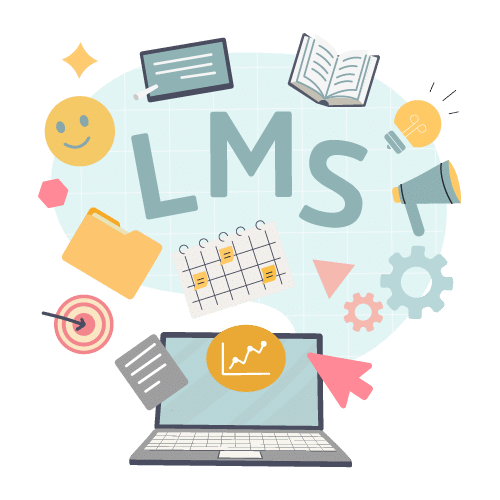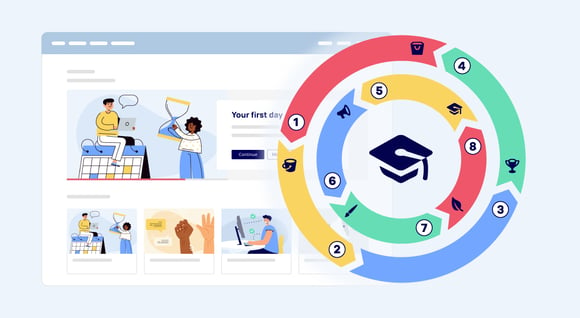Streamline Education With a Leading Learning Management System
In the ever-evolving landscape of education, the adoption of a leading Understanding Monitoring System (LMS) provides a critical possibility to enhance processes and enhance both teaching and learning experiences. By offering and automating management jobs tailored finding out paths, an efficient LMS not just facilitates much better engagement but additionally fosters a setting helpful to collaboration and inclusivity.
Benefits of a Knowing Management System
A Learning Monitoring System (LMS) supplies numerous advantages that can considerably boost the instructional experience for both teachers and learners. Mostly, an LMS promotes streamlined program administration, allowing teachers to handle program products, track student progression, and assess efficiency successfully. This automation reduces the administrative worry on instructors, allowing them to focus much more on mentor and pupil involvement.
Furthermore, LMS systems support personalized understanding courses, accommodating diverse knowing designs and paces. This versatility cultivates an extra comprehensive atmosphere, enabling learners to gain access to resources that best match their requirements. The ease of access of an LMS permits students to engage with course web content anytime and anywhere, advertising self-directed knowing and fitting different timetables.
Another significant advantage is the improved partnership possibilities an LMS offers. Conversation online forums, team jobs, and peer analyses urge interaction among students, enhancing their understanding via shared viewpoints. The data analytics functions of an LMS make it possible for teachers to get insights right into learner involvement and performance, notifying training methods and interventions (LMS SG).
Secret Attributes to Seek

Following, robust coverage and analytics capabilities supply important understandings right into student development and involvement, permitting instructors to make data-driven choices. Integration with other devices, such as content writing software and interaction systems, is likewise essential for boosting capability and enhancing operations.
Scalability is an additional important function, making sure that the LMS can expand together with the establishment's demands, fitting an increasing number of customers and content. Furthermore, mobile compatibility is crucial in today's electronic landscape, enabling learners to gain access to academic materials on different tools.
Lastly, strong safety procedures need to remain in place to secure sensitive info and keep compliance with educational policies. By prioritizing these vital features, organizations can pick an LMS that supports efficient training and discovering results, inevitably enhancing the academic experience for all stakeholders entailed.

Enhancing Pupil Engagement
Pupil engagement is a crucial factor in the success of any type of curriculum, as it straight influences finding out outcomes and retention rates. A durable Discovering Management System (LMS) can play a pivotal role in improving student interaction via various innovative features.

Moreover, tailored knowing paths permit trainees to proceed at their own rate, dealing with individual understanding styles and choices. This adaptability not just cultivates a feeling of possession over their learning trip but additionally keeps pupils spent and motivated.
In addition, real-time responses systems allow teachers to keep track of student performance and offer prompt assistance, more boosting the finding out experience.
Execution Techniques for Organizations
Successful implementation of a Learning Monitoring System (LMS) requires organizations to embrace a calculated strategy that aligns modern technology with instructional objectives. To accomplish this, organizations need to start by carrying out a detailed demands analysis to determine certain demands, making sure that the LMS will successfully resolve difficulties dealt with in mentor and understanding.
Next, appealing stakeholders-- faculty, administrators, and students-- is critical for cultivating a culture of partnership and assistance. Training sessions should be arranged to furnish users with the needed abilities to leverage the LMS efficiently. In addition, organizations must allot sufficient sources, including time and budget, to facilitate a smooth change and continuous maintenance.
Furthermore, developing a phased rollout plan can help alleviate prospective disruptions. Establishments can start with pilot programs to test capability and gather responses before full-scale implementation. Continual examination and adaptation of the LMS based upon user experience will certainly further boost its effectiveness.
Last but not least, it is necessary to connect a clear vision of how the LMS sustains pedagogical techniques, thus motivating buy-in from all parties included. By following these methods, organizations can ensure an effective LMS application that ultimately boosts the academic experience.
Measuring Success and Results
Determining the success and end results of a Learning Administration System (LMS) is necessary for establishing its influence LMS SG on mentor and discovering. This procedure entails the collection and analysis of quantitative and qualitative data to examine the efficiency of the LMS in accomplishing instructional objectives. Trick efficiency indicators (KPIs) such as student engagement rates, course completion rates, and analysis scores provide crucial insights into user interaction and learning outcomes.
Furthermore, studies and responses systems can catch the experiences of both teachers and students, providing valuable perspectives on usability, web content relevance, and overall satisfaction. By triangulating these information resources, organizations can determine strengths and areas for renovation within the LMS framework.
Furthermore, straightening LMS metrics with institutional objectives boosts accountability and sustains strategic planning. Inevitably, a methodical strategy to determining success and end results not only makes sure continual improvement of the LMS yet also promotes a culture of data-driven decision-making.
Conclusion
The combination of a leading Understanding Management System (LMS) substantially boosts educational experiences by automating administrative jobs and giving customized learning chances. By cultivating collaboration and inclusivity, an effective LMS not only enhances pupil engagement but likewise drives much better knowing end results. Establishments must prioritize the choice and application of an LMS that lines up with their objectives, making certain durable analytics and interactive content are used to determine success and continually enhance the educational atmosphere.
A Learning Administration System (LMS) provides various advantages that can considerably boost the educational experience for both learners and educators.Additionally, LMS systems sustain customized understanding paths, fitting varied knowing designs and speeds.Measuring the success and end results of an Understanding Management System (LMS) is vital for establishing its effect on mentor and learning.The assimilation of a leading Understanding Administration System (LMS) considerably enhances educational experiences by automating management jobs and providing customized learning possibilities. By promoting collaboration and inclusivity, an effective LMS not just improves pupil involvement however also drives better understanding outcomes.